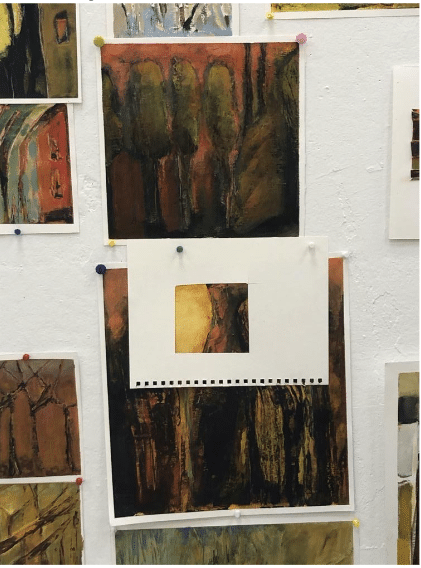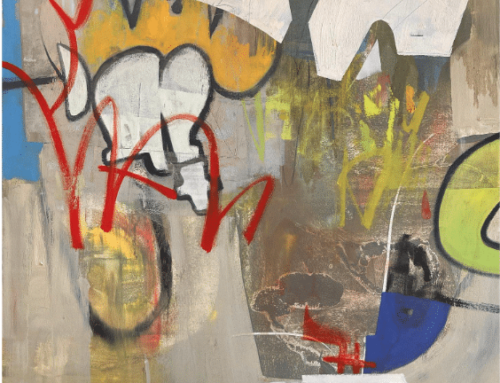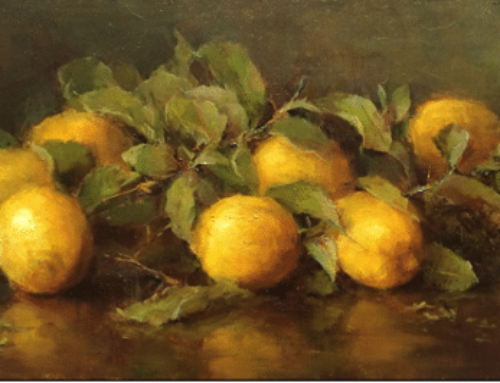After you’ve been painting a while, you might reach a point where you begin to suspect that you lack a “style” – your work seems all over the place, your processes somewhat random, your paintings, while fine on their own, fail to form a Coherent Body of Work.
It may be this stage is necessary on the way to developing the themes and the particular skills one needs for one’s true and authentic subject and style. One way out is to stop thinking about it and try working through it. Making paintings in series can provide a relatively painless way to leave your comfort zone(s) and push yourself toward “finding your voice” in your art.
Working in series means “making multiples” – not just repetitively recreating a single work, but creatively exploring, through multiple related works, a single idea, theme, or motif. You might start a series of small skyscapes for example, or a series based on the theme of gardening, let’s say, or anything that addresses a particular aspect of yourself or your world.
Why do this? It creates a crucible in which to concentrate your creativity. It helps fight procrastination (no more “what to paint?” excuses). And it’s a tremendous opportunity to explore your motivations and find out who you are as a creative individual.
Diffuse the pressure by working on small pieces of paper (hence the 6” x 6”) and put yourself on the clock, giving yourself 30 minutes to complete three different “rough draft” painted sketches in rapid succession.
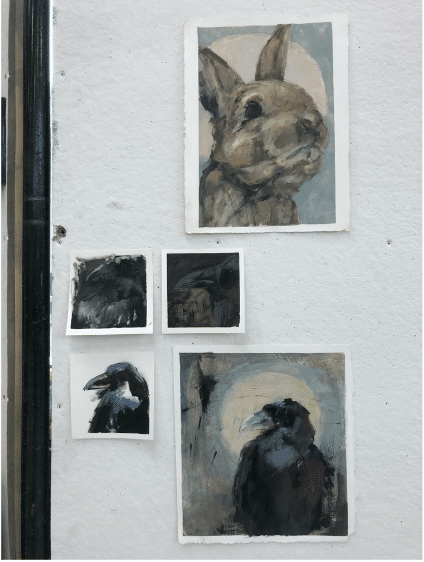
A series of experiments around an animal theme explored in gouache.
The key is starting small and working fast. In this exercise, you make three small, timed paintings one after the other, all in one sitting.
Step 1 – Cut canvas paper into twelve 6-inch rectangles (or if you’re feeling more adventurous, squares).
Step 2 – Place tape around the borders of three squares (so when you take off the tape it leaves a white border like a frame) and secure them to a piece of cardboard or some other hard surface you don’t mind messing up.
Step 3 – Paint three DIFFERENT mini paintings in quick succession. Start on square one with what you know if you like; but change it up on each of the next two successive squares, which you’ll do next (make all three paintings in one session). Peel off the tape and see what you’ve got.
Now the real work starts. Pick one of the three and launch a new 30-minute session, making another three “rough draft” paintings based on the one you chose from the first session, changing it up each time (different color combinations, moods, lighting, perspectives and compositions, etc). If you don’t like any of the three from the first session, take a different tack – make something up. Don’t think, improvise; the clock is ticking!
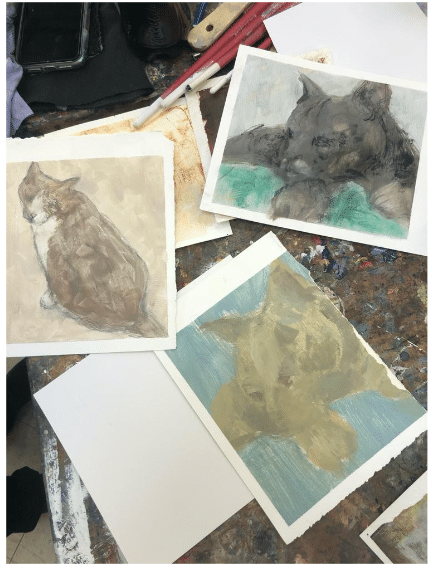
More gouache experiments around the animal theme.
Now you’re off and running. Do this two more times over the next day and you will have a dozen launching points for new ideas – and among them maybe one or two, or maybe just one section of one of them, that has SOMETHING in it of YOU – something intriguing, promising. That’s what you’re looking for and the whole reason for doing this exercise. Those small victories are signposts toward YOUR work.
You might not be making masterpieces, but you are generating ideas for original future work. On a practical level, you will get better just by making more paintings, and more importantly, you’ll be refining the specific skills you need to do the work that is truly yours.
Painting is about finding your own vision. The key is to evolve, through the practice of making art, a theory of what art could or should be – and then to devote your life to trying (and failing, gloriously!) to make art that fits that definition.
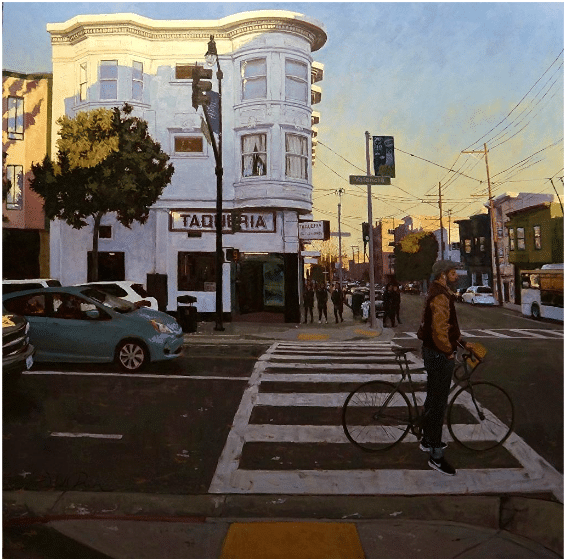
Scott W. Prior, Nikes on Valencia, oil, 48 x 48 inches.
At worst you’ll have had twelve chances to practice mixing, moving paint around, and composing painterly space. “Twelve is a pattern that manifests itself in life, nature, religion, mathematics, technology, design, and culture,” notes creativity consultant Roger Von Oech, “… twelve months in a year, twelve numbers on a clock face… twelve jurors on American juries. And… a perfect bowling game consists of twelve consecutive strikes.”
But you won’t be worried about whether you’re bowling strikes or gutter balls on this. This is not about finished paintings; it’s about planting seeds for future work. Perhaps a whole new series will arise from an idea that turns up on one of the 12. You won’t know until you try (and try again x 10).
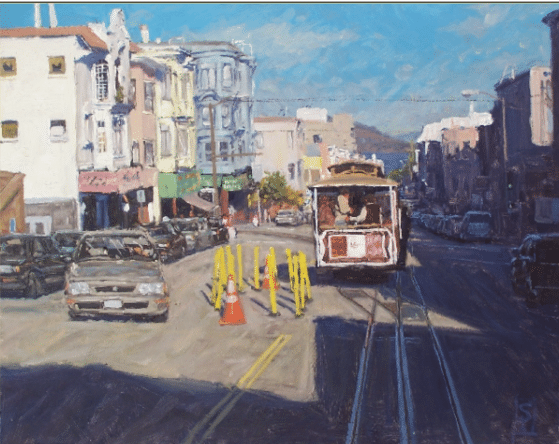
Scott W. Prior, A San Francisco Treat, oil on panel, 24” x 30.”
Many professional artists work in series that come and go. Artist Scott Prior, for example, has made it a practice to return to painting American urban geography (largely San Francisco) and over a period years has developed a major name for himself in the genre.
Prior teaches his approach to the urban landscape in his video Painting the Urban Landscape.
Seeing the Writing on the Wall: Sign Painter Turns Watercolor Master
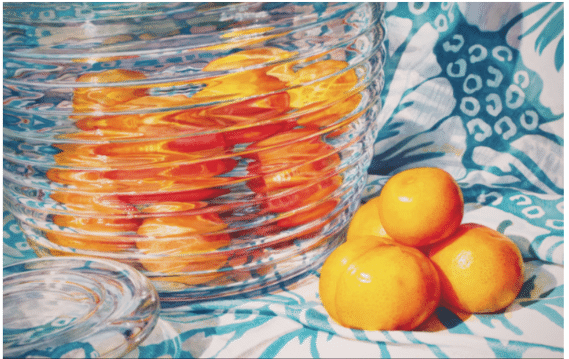
Frank Spino, Calamondins Inside and Outside, watercolor, c. 20 x 28
Frank Spino was among the heavy hitters who headed up last week’s Watercolor Live (Jan. 24-26). He travels the world painting and teaching workshops. He wasn’t always a professional watercolorist though – far from it.
Born after WWII into a large military family, Frank went to 13 grade schools. Although he showed interest in art at an early age, it was never encouraged. With his father stationed in Ohio, upon graduation from high school he chose to study art at Ohio University. There he received a good exposure to art and art history. But his real artistic enlightenment and advancement came under the tutelage of Henry Hensche, a gifted teacher of light and color, at the Cape School of Art, Provincetown, Massachusetts.
Frank became a sign painter operating as Spino’s Signs. It allowed him to continue to improve his artistic skills in design, brushwork and the use of color. This eventually led to the pinnacle of his career – billboard painting, where he advanced to be able to paint a 10′ x 30′ board in a day. With the advent of computers and large format printing, billboard painting became obsolete, so he purchased a Macintosh computer and taught himself computer graphics. He spent the next twenty years improving those skills in the fields of graphic design and printing.
It was with the passing of his mother in 2010, that Frank realized he had a limited amount of time left and that if he was ever going to pursue painting, now was the time. With the unfailing support of his wife Susan, he painted on Saturdays for four years. Upon retirement in 2014, he is now free to paint full time, and by all appearances his “second act” is playing to a full house.
Streamline runs a number of inspiring online events all year long. Perhaps one of them is right for you.

